eMotion opens the Chicago Sinfonietta’s 27th season by inviting you to Expect the Unexpected and discover what happens when the 21st century urban energy of a hip-hop dance troupe is boldly wedded to Russian and American symphonic music and then woven together into something new, connecting the heartbeat of dance that inspires art across history.
COMPOSERS
Sam Shoup, Orchestral Dance Mix (World Premiere)
 Sam Shoup was born and raised in Memphis, which is (not coincidentally) also the home of Mei-Ann Chen’s other orchestra. The son of a bandleader and vocalist, he has a degree in Music Composition from the University of Memphis and has won several awards as a jazz bassist. After leading a rock band in the 80s, he began working professionally as a big band an orchestral arranger. He is an arranger for The National Symphony Orchestra at The Kennedy Center as well as The New York Pops Orchestra and The Memphis Symphony Orchestra. In 2012, he arranged the 40th Anniversary orchestral performance of Marvin Gaye’s classic What’s Goin’ On in D.C., but it is his work in Memphis with the MSO and rapper Al Kapone that instantly qualified him to take on FWK and the Sinfonietta. Shoup wrote the transitions that connect Tchaikovsky and Price, taking themes from each to create the seamless mix that premieres at eMotion.
Sam Shoup was born and raised in Memphis, which is (not coincidentally) also the home of Mei-Ann Chen’s other orchestra. The son of a bandleader and vocalist, he has a degree in Music Composition from the University of Memphis and has won several awards as a jazz bassist. After leading a rock band in the 80s, he began working professionally as a big band an orchestral arranger. He is an arranger for The National Symphony Orchestra at The Kennedy Center as well as The New York Pops Orchestra and The Memphis Symphony Orchestra. In 2012, he arranged the 40th Anniversary orchestral performance of Marvin Gaye’s classic What’s Goin’ On in D.C., but it is his work in Memphis with the MSO and rapper Al Kapone that instantly qualified him to take on FWK and the Sinfonietta. Shoup wrote the transitions that connect Tchaikovsky and Price, taking themes from each to create the seamless mix that premieres at eMotion.
More on Shoup, including a goofy music video from his 80s rock band The Dog Police, can be found at his website.
You can get a feel for Shoup’s arrangements (and a hint of what’s to come at eMotion) in this mini-documentary of the Al Kapone concert in Memphis.
Pyotr Ilyich Tchaikovsky, Swan Lake Suite (Mvt. 1, 2, 6 & 8)
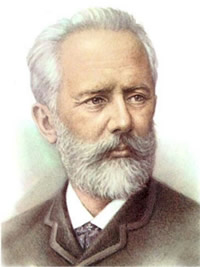 In the realm of ballet, there’s a good chance that the fame and recognition accorded Tchaikovsky’s Swan Lake is exceeded only by another, later ballet of his, The Nutcracker. Both ballets are based in part on folk tales with plotlines that include magical transformations. Swan Lake was the composer’s first ballet score. Up until that time, composers for ballet were specialists. Unlike Tchaikovsky, they didn’t work in other forms like opera or symphony. He completed his score quickly, reportedly because he was in a hurry to begin work on an opera. It received its Moscow premiere in 1877, within a year after its commission. Swan Lake is a four act ballet, and the movements performed at eMotion come from a suite that takes a bit from each. You can get some sense of the tempos for each by their names: Scène, Valse, Dance éspagnole and Mazurka. Although Swan Lake ultimately tells a tragic tale, its mood is lighter in these movements, and this lends itself well to the rapid-fire choreography of FWK.
In the realm of ballet, there’s a good chance that the fame and recognition accorded Tchaikovsky’s Swan Lake is exceeded only by another, later ballet of his, The Nutcracker. Both ballets are based in part on folk tales with plotlines that include magical transformations. Swan Lake was the composer’s first ballet score. Up until that time, composers for ballet were specialists. Unlike Tchaikovsky, they didn’t work in other forms like opera or symphony. He completed his score quickly, reportedly because he was in a hurry to begin work on an opera. It received its Moscow premiere in 1877, within a year after its commission. Swan Lake is a four act ballet, and the movements performed at eMotion come from a suite that takes a bit from each. You can get some sense of the tempos for each by their names: Scène, Valse, Dance éspagnole and Mazurka. Although Swan Lake ultimately tells a tragic tale, its mood is lighter in these movements, and this lends itself well to the rapid-fire choreography of FWK.
An exhaustive guide to all things Tchaikovsky can be found at the Tchaikovsky Research Project.
Listen to this recording of the Valse from Act One and try to imagine what the FWK crew will do with it.
Florence Price, Symphony No. 1 in E Minor (Mvt. 3 & 4)
 Mei-Ann Chen is quickly becoming the world’s foremost champion of Florence Price, the first African-American woman acknowledged as a symphonic composer. The Sinfonietta performed her work The Oak at last year’s MLK tribute concert, and Mei-Ann also led the Chicago Symphony Orchestra in her Mississippi River Suite earlier this year. Price was born and began her music career in Arkansas after studying at the New England Conservatory of Music. However, worsening racial tension in Arkansas convinced Price to move to Chicago in 1927, where she studied at the American Conservatory of Music and Chicago Musical College and established herself in as a teacher, pianist, and organist. In 1932, she composed Symphony No. 1, and it received its debut by the Chicago Symphony Orchestra in 1933, the first time a black woman had her work presented on such a stage. Its inclusion in eMotion unites African American art from different generations on the very same stage that premiered it. Kuumba Lynx’ dance moves will accompany the 4th movement.
Mei-Ann Chen is quickly becoming the world’s foremost champion of Florence Price, the first African-American woman acknowledged as a symphonic composer. The Sinfonietta performed her work The Oak at last year’s MLK tribute concert, and Mei-Ann also led the Chicago Symphony Orchestra in her Mississippi River Suite earlier this year. Price was born and began her music career in Arkansas after studying at the New England Conservatory of Music. However, worsening racial tension in Arkansas convinced Price to move to Chicago in 1927, where she studied at the American Conservatory of Music and Chicago Musical College and established herself in as a teacher, pianist, and organist. In 1932, she composed Symphony No. 1, and it received its debut by the Chicago Symphony Orchestra in 1933, the first time a black woman had her work presented on such a stage. Its inclusion in eMotion unites African American art from different generations on the very same stage that premiered it. Kuumba Lynx’ dance moves will accompany the 4th movement.
The Arkansas Encyclopedia of History and Culture has a fairly thorough chapter on Price.
The video features her entire historic Symphony.
Aram Khachaturian, Sabre Dance from Gayane
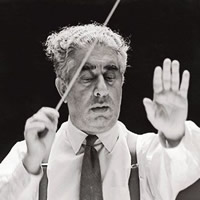 The mere mention of Sabre Dance is enough to conjure up visions of leaping, sword-wielding dancers performing feats of athleticism. Because of its huge presence in popular culture, it might come as a surprise that it is but a very small part of an often achingly lovely four act ballet that premiered during the Soviet era and written by a twentieth century contemporary of Shostakovich and Prokofiev. Khachaturian was Armenian, not Russian, and the plot of Gayane (which is titled after its female lead) contains elements of interethnic love, betrayal and friendship that interact in an Armenian setting. His works are saturated with motifs of Armenian culture, and paved the way for new styles and daring explorations. This sometimes got him in trouble with the Soviet authorities, including a time when he was forced to apologize for being "formalist" and "anti-popular." It’s somewhat ironic, then, that Sabre Dance is among the most popular of classical pieces, interpreted by everyone from rock guitarists to jazz big bands, not to mention its use as a virtuosic showpiece for classical soloists and ensembles. For the eMotion performance, both FWK and Kuumba Lynx will join together.
The mere mention of Sabre Dance is enough to conjure up visions of leaping, sword-wielding dancers performing feats of athleticism. Because of its huge presence in popular culture, it might come as a surprise that it is but a very small part of an often achingly lovely four act ballet that premiered during the Soviet era and written by a twentieth century contemporary of Shostakovich and Prokofiev. Khachaturian was Armenian, not Russian, and the plot of Gayane (which is titled after its female lead) contains elements of interethnic love, betrayal and friendship that interact in an Armenian setting. His works are saturated with motifs of Armenian culture, and paved the way for new styles and daring explorations. This sometimes got him in trouble with the Soviet authorities, including a time when he was forced to apologize for being "formalist" and "anti-popular." It’s somewhat ironic, then, that Sabre Dance is among the most popular of classical pieces, interpreted by everyone from rock guitarists to jazz big bands, not to mention its use as a virtuosic showpiece for classical soloists and ensembles. For the eMotion performance, both FWK and Kuumba Lynx will join together.
The Virtual Museum of Aram Khachaturian contains a wealth of information in Russian, Armenian and English, greeting you with a snippet of Sabre Dance on the landing page.
For a glimpse of those sword-swinging dancers, check this video.
Sergei Rachmaninoff, Symphonic Dances, Op. 45
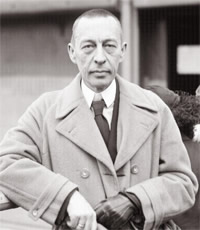 Rachmaninoff’s career straddles two centuries. His first symphony debuted in 1897 but was poorly received, causing a writer’s block that didn’t dissipate until 1901 and his Piano Concerto No. 2. By contrast, this piece was widely hailed, and he began to compose in earnest. He was a virtuoso pianist, even touring the United States in 1909. Then, with the Russian revolution in 1917, everything changed. Rachmaninoff was a member of the bourgeoisie, and quickly fell out of favor with the new government, losing his livelihood and property. By 1918, he was living in the U.S. The Symphonic Dances was his last completed work. Eugene Ormandy and the Philadelphia Orchestra premiered it in 1941. The Dances combine energetic rhythmic sections, reminiscent of Stravinsky's The Rite of Spring, with some of the composer's lushest harmonies. Although it was written as a stand-alone concert piece, many have speculated that it includes material from an unfinished ballet attempted before the revolution, and Rachmaninoff did in fact play the music for a choreographer who, sadly, died a short time later. It eventually found life on the dance stage when first the New York City Ballet, and then the San Francisco Ballet mounted productions over a half century later.
Rachmaninoff’s career straddles two centuries. His first symphony debuted in 1897 but was poorly received, causing a writer’s block that didn’t dissipate until 1901 and his Piano Concerto No. 2. By contrast, this piece was widely hailed, and he began to compose in earnest. He was a virtuoso pianist, even touring the United States in 1909. Then, with the Russian revolution in 1917, everything changed. Rachmaninoff was a member of the bourgeoisie, and quickly fell out of favor with the new government, losing his livelihood and property. By 1918, he was living in the U.S. The Symphonic Dances was his last completed work. Eugene Ormandy and the Philadelphia Orchestra premiered it in 1941. The Dances combine energetic rhythmic sections, reminiscent of Stravinsky's The Rite of Spring, with some of the composer's lushest harmonies. Although it was written as a stand-alone concert piece, many have speculated that it includes material from an unfinished ballet attempted before the revolution, and Rachmaninoff did in fact play the music for a choreographer who, sadly, died a short time later. It eventually found life on the dance stage when first the New York City Ballet, and then the San Francisco Ballet mounted productions over a half century later.
Internet resources on Rachmaninoff are regrettably scarce, but you can find an in-depth entry at Wikipedia.
The video is a fairly recent performance of Mvt. 3 by the Philadelphia Orchestra at Wolf Trap.
ARTISTS
Mei-Ann Chen, Music Director and conductor
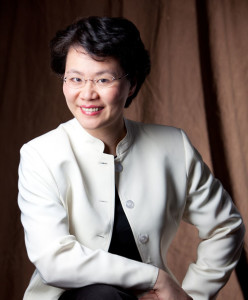 eMotion begins Mei-Ann Chen’s third season as Chicago Sinfonietta Music Director. In her short time with the orchestra, she has brought the orchestra to new artistic heights, developing an aggressively adventurous approach to repertoire and collaboration while firmly anchoring her ambitious plans in the Sinfonietta’s quarter-century heritage of diversity, inclusion and service to the community. In the process, she has earned two awards from the League of American Orchestra: The Helen M. Thompson Award, given to a music director every two years to recognize their impact and potential for a significant national career, and one for the orchestra, a First Place Award for Adventurous Programming.
eMotion begins Mei-Ann Chen’s third season as Chicago Sinfonietta Music Director. In her short time with the orchestra, she has brought the orchestra to new artistic heights, developing an aggressively adventurous approach to repertoire and collaboration while firmly anchoring her ambitious plans in the Sinfonietta’s quarter-century heritage of diversity, inclusion and service to the community. In the process, she has earned two awards from the League of American Orchestra: The Helen M. Thompson Award, given to a music director every two years to recognize their impact and potential for a significant national career, and one for the orchestra, a First Place Award for Adventurous Programming.
As the Chicago Tribune’s John von Rhien has remarked, “Mei-Ann Chen… was born to lead this group. She plays and speaks from the heart, the body and the head, and the audience and players have embraced her.” Andrew Patner, in reviewing last season’s final concert, said this about Chen’s tenure: “Few outfits can do more for an audience and potential audiences than a community-focused musical enterprise. And few such groups can do more or better among these than the Chicago Sinfonietta.”
Born in Taiwan, Ms. Chen has lived in the United States since 1989. She holds a Doctor of Musical Arts degree in conducting from the University of Michigan, where she was a student of Kenneth Kiesler. Prior to that, she was the first student in New England Conservatory’s history to receive master’s degrees, simultaneously, in both violin and conducting. She is also the Music Director of the Memphis Symphony Orchestra and is in high demand around the globe as a guest conductor.
Mei-Ann Chen’s complete biography can be found here.
Mei-Ann recently spoke at the Aspen Ideas Festival, and while there, she sat down with HuffPost Live for a wide ranging conversation about creativity, gender roles and giving back to the community.
FootworKINGz, dance troupe
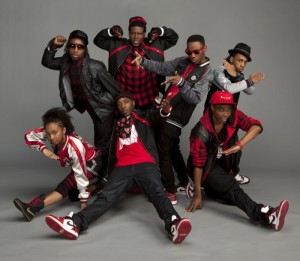 The FootworKINGz (FWK) is a professional ensemble featuring Chicago’s top footworkers. They range from ages 16-24 and represent the essence of strength, raw talent, extreme energy, and power. FWK’s ensemble includes Artistic Director Charles “King Charles” Parks and Trevell "TeeJay the Boss" Johnson, who is the lead choreographer on this project. Footworking is an extremely energized, lower body movement that evolved as a response to House and Juke, both popular and distinctly Chicago styles of street dancing. FWK members have toured with Madonna and appeared on national television in both America’s Got Talent and America’s Best Dance Crew. They have performed in New York City, San Francisco, Paris, Orlando and Las Vegas among other cities around the world. More about them with lots of cool stuff can be found at their website.
The FootworKINGz (FWK) is a professional ensemble featuring Chicago’s top footworkers. They range from ages 16-24 and represent the essence of strength, raw talent, extreme energy, and power. FWK’s ensemble includes Artistic Director Charles “King Charles” Parks and Trevell "TeeJay the Boss" Johnson, who is the lead choreographer on this project. Footworking is an extremely energized, lower body movement that evolved as a response to House and Juke, both popular and distinctly Chicago styles of street dancing. FWK members have toured with Madonna and appeared on national television in both America’s Got Talent and America’s Best Dance Crew. They have performed in New York City, San Francisco, Paris, Orlando and Las Vegas among other cities around the world. More about them with lots of cool stuff can be found at their website.
Check out this video, and then just try to imagine them in front of a symphony orchestra!
Kuumba Lynx, dance troupe
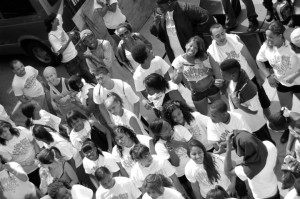 FWK was founded in 2007 by Leida “Lady Sol” Garcia. Back in 1996, though, Lady Sol and two other young women, Jaquanda Villegas and Jacinda Bullie, joined together to form the non-profit arts and education organization Kuumba Lynx as a response to public school funding cuts and social injustice. They came together under the belief that youth have a power in edutainment (arts & education). Their goal was to utilize Hip-Hop arts & culture to increase social consciousness, inner peace, creativity, and universal freedom. They continue that work today, almost a full generation later, with dance, theater, spoken word and other forms of artistic expression. More on them and their mission is at their website.
FWK was founded in 2007 by Leida “Lady Sol” Garcia. Back in 1996, though, Lady Sol and two other young women, Jaquanda Villegas and Jacinda Bullie, joined together to form the non-profit arts and education organization Kuumba Lynx as a response to public school funding cuts and social injustice. They came together under the belief that youth have a power in edutainment (arts & education). Their goal was to utilize Hip-Hop arts & culture to increase social consciousness, inner peace, creativity, and universal freedom. They continue that work today, almost a full generation later, with dance, theater, spoken word and other forms of artistic expression. More on them and their mission is at their website.
Kuumba Lynx’s dance ensemble recently competed in the Takin’ it to the Streets dance battle. In this video, choreographer Christopher “Mad Dog” Thomas discusses how they prepared.
Research and copywriting by Don Macica.
Don is a marketing consultant to the performing arts community and a contributing writer to several online publications including Chicagomusic.org and Arteyvidachicago.com. When not traveling, he lives a stone's throw from Lake Michigan in Chicago’s Rogers Park neighborhood. He is the author of Border Radio, a blog about music, migration and cultural exchange.
